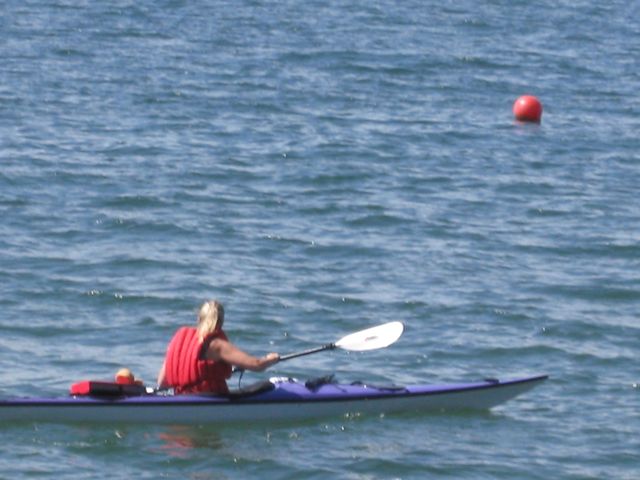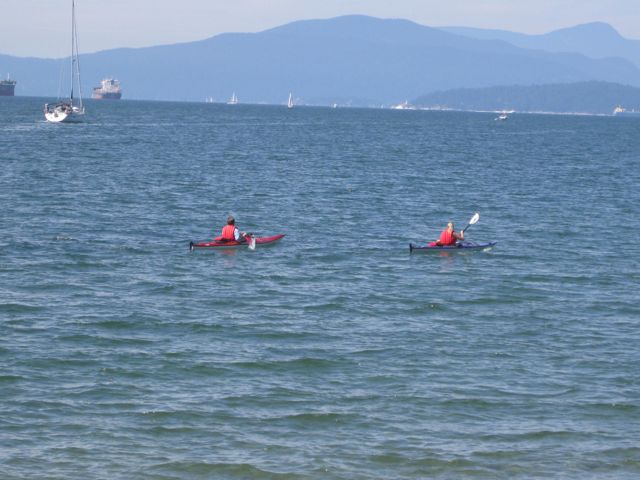Sometimes, following your gut instinct is NOT the way to go.
Now I realize that might sound heretical for a therapist to say…so much of the work we do is have people work to discover what is going on inside of them, and to trust that and act on it.
Mostly, that is of benefit.
But sometimes, all we can hear is a part of ourselves that is scared or angry and that actually isn’t our deepest “gut” talking, but rather an anxious part that hijacks us and masquerades as a “gut feeling”. We get fooled by that, and if not self-aware can get sucked into doing something that is exactly the opposite of what is good for us.
I was reminded of this the other day as I found myself going through my pictures from summer. And I came across the following photos, taken at the edge of downtown Vancouver:
 |
 |
A friend of mine kayaks…she went to a week of white water kayaking school for vacation…not my idea of fun, but it was hers.
She talked about the various skills she was taught. The skill she had most trouble with was uprighting herself when the kayak turned over. Capsizing a kayak is not a big deal once you know this skill…and white water rafting requires this skills because of how the water currents can toss a person upside down. Time after time, as the instructor tipped her over, she would struggle to flip the kayak upright and fail…she would need to use the prearranged signal that of knocking on the side of the kayak. The instructor would help to release the waterproof skirt, and pull her to the surface so she could breathe again. Then she would get back in the kayak and try again.
She took several days to finally “get it”. The challenge was, she said, to not listen to what her body wanted to do, but to do what her instructor told her to do. Success wasn’t achieved until she stopped listening to what her body told her to do, and she did what her body didn’t want to do.
See, when you’re underwater upsidedown in a kayak, your brain has one agenda…OXYGEN. Your brain wants your lungs to be able to take a fresh load of air. That’s a really strong drive, that breathing thing, eh? Desperately strong.
So, in one’s priority to get oxygen, the body seeks to have a person’s nose above the water…so as a person is suspended in the kayak under the water, it is a natural drive to twist the body to strain to have your face emerge from the water to breathe.
Only it doesn’t work that way. The more you try to get your face on top of the water, the farther you get from being able to get your face up above the water.
To actually be able to get your face out of the water, to satisfy the insatiable desire to breathe, one must do something completely counterintuitive: you need to temporarily not work towards having your face out of the water. It will be the last part of the body to emerge out of the water. The trick is to keep your center of gravity low…which means rolling out of the water one vertebrae at a time. Think of it as first bringing out your lower trunk, then middle trunk, then rib cage, then neck, and very lastly, your head. THEN you can breathe.
It took her four days to conquer what her body WANTED to do, to do what her body actually NEEDED to do to survive. When she did what she NEEDED to do, she got to do what her body longed for—breath. It was mind over matter until her body felt the feeling of what it was to do it right and be able to breathe successfully at the end. Once she “got it”, she could do it over and over again. Her body knew the feeling, and knew how it could get the air it needed.
I think sometimes our lives are like that:
- A person who finds it excruciatingly hard to get out of bed in the morning, actually does
And realizes hours later that it would have been worse to stay in bed
- A person who is anxious and concerned and preoccupied knows that exercise is a natural destressor. She fights it—nothing in her wants to bother exercising, but gives in when a friend is at the end of the driveway on the way to the gym and won’t drive away without her.
And she feels great after
- A husband who knows his wife is ticked at him because she thinks he’s not involved enough. He’s so done with disappointing her that he finds excuses to hide out at the computer or the hockey rink (which keeps him from her scowl, but as far as she’s concerned further proves her point)…but with the support of his therapist, he turns towards her to hear her pain
And over time they become more connected, and she gets less frustrated.
- A wife who nags her husband to get more involved with the kids, clean up after himself, to remember his mother’s birthday etc. etc. and most of all just really really wants to be noticed by him. The counsellor works with her to understand her pain and, over time, she becomes less demanding as she discovers the underlying source of her pain. She is able to back off
And he becomes more engaged as he feels less like he has to run away.
Hearing about kayaking was a way for me to learn how clearly that sometimes a person has to not do what feels right but rather, to do what is effective–which may be very different.
Of course, a person needs to use their judgment carefully when doing something other than what their gut says. It takes some thoughtful contemplation to look at what your body is saying to you…making careful choices about if it is coming from a fearful part that is hijacking you, or from the very best core of who you are providing you with some solid truth. Often the gut can be focused on immediate safety, rather than ultimate effectiveness–check it out
Think about it sometime. Sometime when you’re scared and wanting to pull away, pull in, or pull out.






Write a Comment